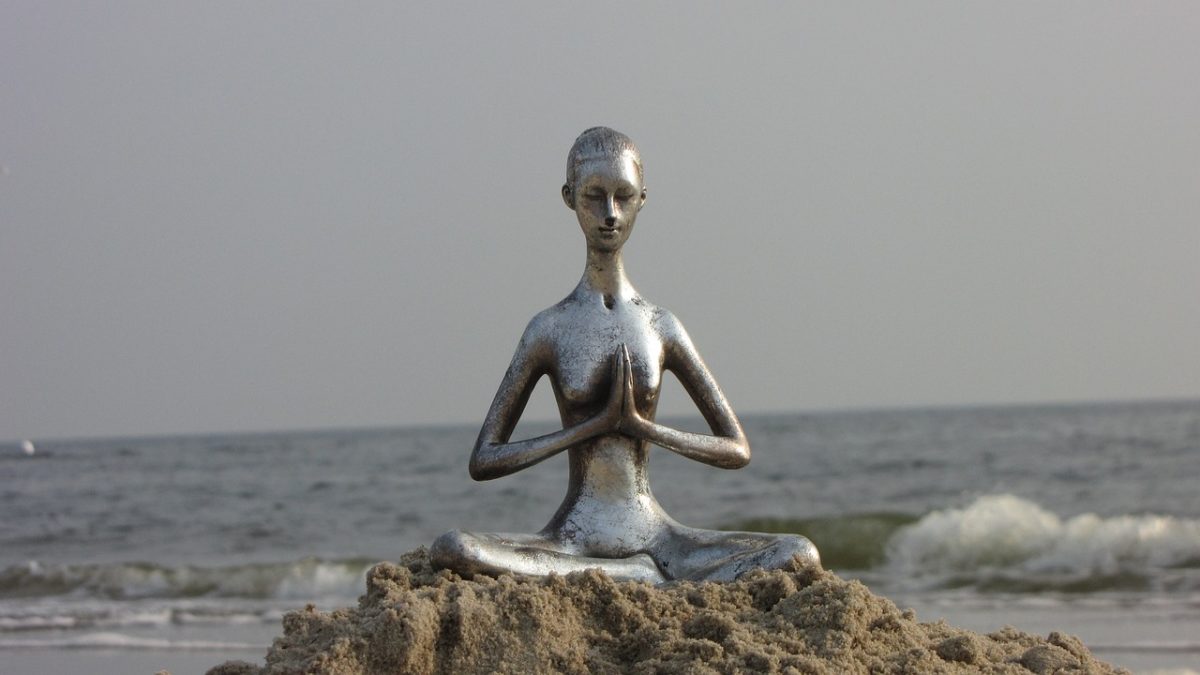Introduction
Namaste is the Sanskrit term that denotes the gesture of greeting anyone without contact in person. Also, it denotes the salutation to a deity or God. It is a customary practice that is prevalent in India and other countries where Hinduism, Buddhism, Jainism, and other oriental religions are in practice.
Namaste Meaning
It is the combination of three Sanskrit words: na+ma(s)+te. ‘Na’ means ‘not’. ‘Ma’ is ‘I’ and ‘te’ is ‘to you’. How could you interpret this?
First, we should understand the correct meaning of the word Nama. Nama is used in Sanskrit to mean I salute or offer my obeisance. How do I offer my obeisance? I offer my obeisance in the complete absence of I. ‘Not I’ or Nama denotes this complete absence of I. This absence of I is the special Salute. Hence Namaste means obeisance to you. It is a special salute with no importance to the Self.
Namaskar, Namaskaram, and Pranam are related synonyms denoting the meaning of the act of salute.
How To Do Namaste?
To do Namaste, press both palms together as close as to the center of your chest and tilt down your head a little. You may optionally say Namaste. Even if you don’t say it, it is understood.
When To Do Namaste?
Namaste is offered in three important circumstances. One occasion is when a devotee shows obeisance to God or a deity.
The second occasion is at the beginning of a meeting between two individuals or more. It is just like saying hello.
Apart from these two occasions, it is also used in yoga poses. It gets the name Anjali Mudra in yoga practice. Anjali Mudra belongs to the type of Mudra known as Hasta Mudras.
Let us have a brief look into them separately.
In Worship Of God
In God Worship, especially in Hindu temple worship, it plays an important role. Every devotee who visits a temple performs Namaste to the deity. In this case, he/she won’t express it in words.
In all pooja mantras, the word Nama is included. Below are some examples.
- Om Ganapataye Nama
- Ganesaya Nama
- Shivaya Nama
- Kesavaya Nama
- Shri Mathre Nama
In Mantra Japa also, it is included.
- Nama Shivaya
- Om Namo Narayanaya
- Namo Bhagavathe Rudraya
- Om Namo Bhagavathe Vasudevaya
Namaste In Formal Greetings
We use it in formal greetings like saying hello when a meeting starts. In this case, two people greet each other. Also, to address a large gathering, one normally starts with Namaste. Greeting the elderly and teachers is one way only. In return, the elderly blesses the one who greets them.
We use it not only at the start of the meeting but also at the end of it. In other words, we use it to bid a bye. Sometimes, we use to bid goodbye when we mean to say enough is enough.
Namaste in Yoga
In yoga, it gets the name, Anjali Mudra. Mudra is a hand gesture that we use in worship and Yoga. Mudras that we use in yoga are of two kinds: Yoga Mudras and Hasta Mudras. Hasta Mudras are hand gestures. Anjali Mudra is an Hasta Mudra.
Yoga Postures like Sun Salutation, Tree Pose, and Cow Face Pose incorporate Anjali Mudra.
Namaste Benefits
- Pranic energy tends to leak from the palms. When we put the palms together, we temporarily lock the energy. To arrest this leakage, we use it in yoga poses for a longer time. Hence it conserves Pranic Energy.
- It is a reminder to us to restrict our ego in any meeting to get the optimum result that meeting. Also, it reminds us to listen to others. Without proper listening, the outcome meeting won’t be fruitful.
- The basis of the Worship of God is Isvarapranidhana or complete surrender to God. The very goal of the spiritual path is the absence of individuality. Namaste envisages the absence of individuality.
- In Pandemic situations like Corona Virus, Social distancing is a compulsory rule to go by. It helps in situations like this to avoid any physical contact. In fact, we observe that world leaders greet each other with Namaste.
Namaste Symbol
The symbol of Namaste is a salutation or prayer. It is also a symbol of welcome.

It is the gesture of both Hello and Goodbye.
